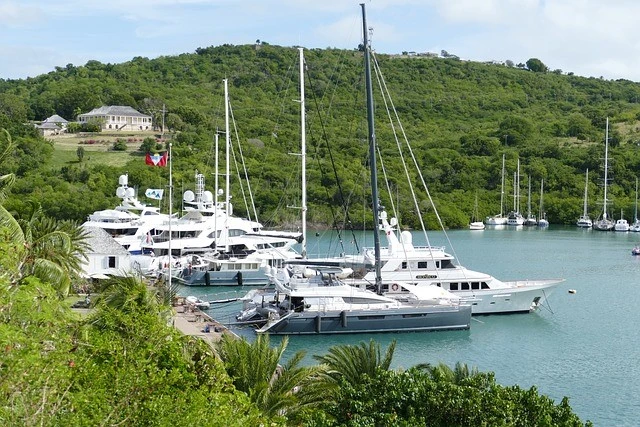02 April 2025
Hull Guide: Learn About the Different Types of Hulls
When buying a boat, the importance of the hull and how it affects the experience on the water can be overlooked for the novice boater. The hull, as the core part of the boat, not only affects how the boat floats, but also influences the various characteristics of the boat and how smoothly it sails. In this guide, we will explore the hull and learn about the characteristics of different types of hulls.

Definition of a hull
A hull is the main body of a boat, which is usually in a sealed state to prevent water from entering the boat and keep it afloat. There are two types of hulls: open and deck-covered. If the hull is topped with a deck, there is an increase in the amount of space available on the boat, and you can place facilities such as masts and halyards on the deck. Open hulls have limited utilization of space and because the keel directly separates people from the water, the swaying of the water is noticeable when people are on the boat and they are prone to discomfort.
Importance of the hull
When sailing on a boat, it is important to understand the principle of boat floatation; a boat floats because the overall density of the air that encases the boat and the contents of the boat is less dense than the density of the water in the area in which the boat is located. As your boat carries more weight, the deeper it will sink in the water. And, if the average density of the boat exceeds the density of the water, the boat will sink. For example, if you own a dinghy, you will be able to visualize this phenomenon when sailing; the more people you have on board, the more noticeable you will find the dinghy gradually sinking in the water as the weight increases.
Different types of hulls
The hull design determines the type of boat, there are many different types of hulls and different boats have different types of hull designs. Below you will find an overview of the different hull types:
Drainage Hulls
Displacement hulls are commonly found on boats that need to carry heavy loads, such as large fishing boats and large yachts. This type of hull has a deep draft and relies heavily on buoyancy for support. Because of their deeper draft, these boats are usually slower, but more stable and able to navigate over wide areas of the ocean. Sailboats often use this type of hull because the bottom of the hull is rounded, which keeps it stable when steering and makes it less likely to capsize.
Sliding Hull
The gliding hull is also one of the common hull types. The design of this hull is characterized by having fewer hull sections in the water, which allows the boat to accelerate to faster speeds. When a boat with a glide hull is cruising at low speeds, it operates much like a boat with a displacement hull. But when the boat reaches speeds of about 15 knots, the flatter surface of the glide hull allows the boat to lift upward and travel quickly over the water, which is what allows these boats to reach higher speeds.
Also, because the hull is mostly out of the water, there is much less resistance from the water to impede the boat's progress, which means that it can move through the water much faster and requires less power to reach the same speed as a boat with a displacement hull.
Flat Bottom Hulls
Flat bottom hulls have a flat bottom, unlike traditional curved hulls that have a pointy bottom. This type of hull is commonly found in dinghies or fishing boats, and because of the flat-bottom design, it is perfect for getting into shallow water and catching shallow fish. Also, these types of boats don't need much power to travel quickly, and they are easy to navigate on the flats and offshore, and are less affected by waves. If you want to fish in shallow or inshore waters, you can choose to fish in shallow or inshore waters and get a perfect fishing experience.
V-Hull
The shape of the V-shaped hull is characterized by a distinctive feature, where the two sides of the hull drop sharply and meet at the bottom to form a V-shape. Thanks to this well-designed hull construction, these boats are able to navigate through the water at the right speed, and especially excel when sailing offshore. However, a powerful engine is required to get the boat into glide mode. Among the V-bottom boat types, the center console boat is the most common one, and this boat is ideal for inshore or offshore fishing, with its V-bottom hull that can easily cut through the waves and take you to the best fishing grounds.
Pontoon Boats
The hull of a pontoon boat consists of two cylinders parallel to the water's surface, with an upper deck that can expand outwards to create comfortable seating and social areas on board, making it easy to host parties or relaxing family explorations. Pontoon boats are more suited to calm inland waters as they are susceptible to waves and storms at sea can put them at risk of capsizing, but they offer the perfect experience when cruising on a lake.
Catamarans have two parallel independent hulls connected by a deck, a design that allows for more space on board. Many luxury catamarans can even accommodate swimming pools and helipads. With its double hull construction, a catamaran can easily access shallow waters. If you want to travel to areas such as Hawaii and the Bahamas, a catamaran is ideal. In addition, the catamaran's double hull structure provides better comfort and stability for those who are prone to seasickness.
Trimaran
The hull design of a trimaran is a variant of the V-bottom hull, which is structured with a V-shaped hull in the center and a small parallel hull on each side. This unique structure not only allows for extra stability when travelling on a trimaran, but also allows for more deck space. However, due to the wider hull of the trimaran, the rocking is more pronounced when sailing on rough waters.
 Report
ReportNetizen comment
Comments

Leave the comment
Relevant Recommendation
Yacht Info
Most Recommended




